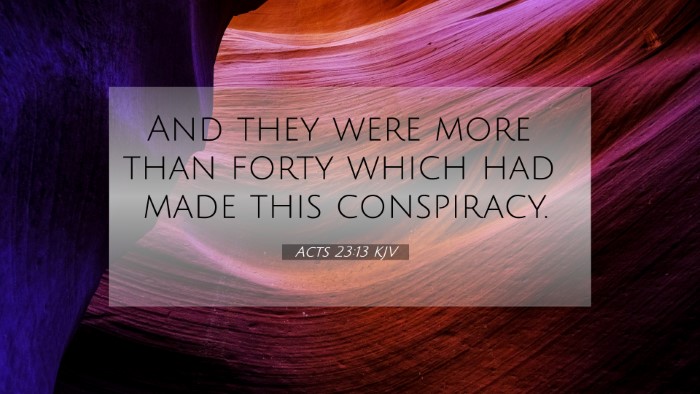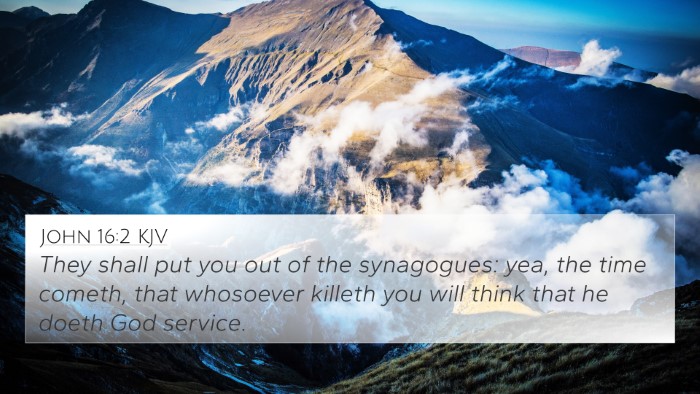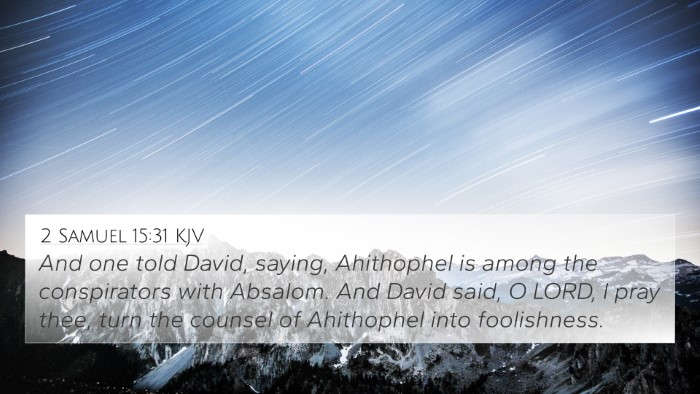Acts 23:13 - Summary and Interpretation
Bible Verse: Acts 23:13 states, "And they were more than forty which had made this conspiracy."
Meaning: This verse reveals a significant plot against the Apostle Paul, illustrating the depth of opposition he faced as he spread the Gospel. These forty individuals had committed themselves to a vow of silence until they had killed Paul, showcasing both the seriousness of their intent and the dangers present in the early Christian mission.
Insights from Commentaries
-
Matthew Henry:
Henry emphasizes the malice of the conspirators, highlighting that their extreme actions reflect the fervor of those opposed to the Gospel. He notes how this incident underlines God's protection over His servant, even amid severe threats. The commitment of these men not only points to a calculated plot but also serves as a reminder of the perilous circumstances faced by believers.
-
Adam Clarke:
Clarke discusses the number of conspirators, pointing out that the large number indicates a significant public sentiment against Paul. He also reflects on the nature of their vow—showing how seriously they regarded their oath and the intensity of their hatred towards the Apostle. Clarke suggests that such unified hostility is an example of the spiritual warfare present in the Christian journey.
-
Albert Barnes:
Barnes focuses on the implications of conspiracies against Paul, viewing this as consistent with the wider narrative of opposition faced by religious figures throughout Scripture. He underscores the fact that the Lord remains aware of all such plans, providing a source of comfort and assurance to believers that God is in control, even when it appears that evil has the upper hand.
Cross References and Connections
Understanding Acts 23:13 can be enriched through several cross-references and connections with other Bible verses:
- Matthew 10:23: Jesus foretells persecution for His followers, emphasizing the same hostility experienced by Paul.
- 1 Corinthians 15:32: Paul discusses confronting danger in Ephesus, showing how he faced mortal threats throughout his ministry.
- 2 Corinthians 11:23-27: Paul recounts his suffering and dangers faced during his missionary work, underscoring the reality of such conspiracies.
- Romans 8:31: "If God is for us, who can be against us?" emphasizes divine protection despite the threats from men.
- Acts 9:23-25: A previous plot against Paul’s life makes a parallel to the conspirators in Acts 23, showing a pattern of opposition.
- Psalm 31:13: David speaks of plots against him, echoing Paul’s experiences and showing a timeless struggle against enmity.
- Philippians 1:28: Paul encourages believers not to be frightened by opponents, similar to how he faced his threats.
Thematic Connections
This verse introduces key themes in the New Testament, including:
- The Reality of Persecution: Acts 23:13 is a stark reminder that the early church faced intense opposition and danger, which serves as an instruction for future generations on the cost of discipleship.
- Divine Protection: In the face of conspiracies, God's will ultimately prevails, as seen throughout Scripture, reminding believers of God's sovereign care.
- The Call to Perseverance: The steadfastness of Paul amid plots serves as a model for believers suffering for their faith.
Using Bible Cross-References for Deeper Understanding
To fully grasp passages like Acts 23:13, employing tools for Bible cross-referencing, such as concordances and cross-reference guides, can illuminate connections between Scripture.
- Study Methods: Engage in cross-referencing Bible study methods to explore themes comprised of continuous biblical narratives.
- Bible Reference Resources: Utilize comprehensive resources to aid in identifying connections between Old and New Testament passages.
- Cross-reference in Sermon Preparation: Preachers can greatly enhance their messages by integrating cross-referenced verses, driving home themes echoing through Scripture.
Conclusion
Acts 23:13 opens a window into the challenges faced by Paul and other early Christians, revealing the context of their faith and resilience. By leveraging cross-references and understanding the broader scriptural narratives, believers can gain deeper insights into not only this verse but also the thematic messages throughout the entirety of Scripture.





